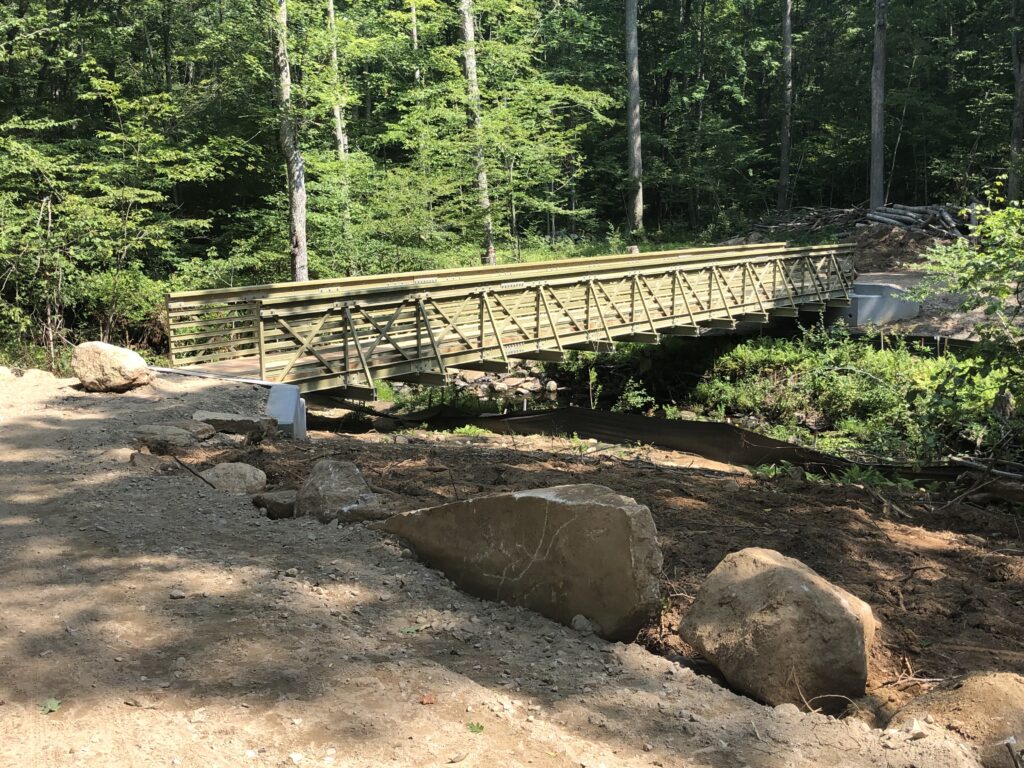There is currently a surge in construction of new trails being built throughout the United States and Canada. The funding from the Great American Trails Act is finally making its way to construction. New trail systems may in urban environments such as greenway systems; however, often trail systems are in rural and/or extremely remote settings.
So, how do you build bridges in the middle of nowhere?
There is a solution that is very niche because it is a fairly uncommon building material. This material is called fiber reinforced polymer, or FRP. If you have ever climbed a fiberglass ladder, you were being fully supported by FRP. FRP materials are made using a process known as pultrusion. “Pultrusion” gets its name because the material is pulled out of the dye rather than a molten steel or aluminum that is “extruded” through a die. FRP materials are made of mostly glass. The remaining material is a polymer resin which thermal sets as it passes through an oven during the manufacturing process. Although more commonly known to be used for ladders, FRP has been used for pedestrian bridges since the 1970s. To our knowledge, none of the FRP bridges in existence today have exceeded their service life. In other words, they are still standing and serving their respective trails systems.
Here is some basic information about FRP and why this material is so different and perfectly suited for remote bridge applications.
FRP pedestrian bridges are light weight.
FRP weighs about 125 pounds per cubic foot, a quarter of steel’s weight. The components of an FRP bridge can be flown by helicopter, moved by an all-terrain vehicle, or even hand-carried into a remote location. They are so much lighter than steel, that the bridges are assembled piece by piece in the field negating the requirement for a crane or the construction of access roads.
FRP pedestrian bridges are corrosion resistant.
FRP materials will never rot (like wood) or rust (like steel). The expected lifespan of an FRP bridge is 100 years whereas the lifespan of a timber bridge can be as little as 10 to 15 years and a steel bridge can be as little as 30 years. The material cost of the FRP material by itself is more expensive than wood and even more expensive than steel however, when considering the overall lifecycle cost of the bridge, FRP bridges are by far the most economical solution. Bridge owners or trail stakeholders do not have to replace the bridge every few decades, which provides increased savings in time, salary, and raising funding for a replacement bridge.
The Areté difference
At Areté structures, we fabricate FRP pedestrian bridges in our facility in the mountains of Boone North Carolina. We fabricate our bridges using a 42-foot-long CNC machine to ensure precision fit. In addition, we are the only FRP bridge fabricator that makes bridges in such a way that they will maintain their shape for the life of the bridge. We do this by fabricating a mechanical camber in the bridge, rather than relying on friction to hold the bridge in its shape.
Contact us for a quote today.

